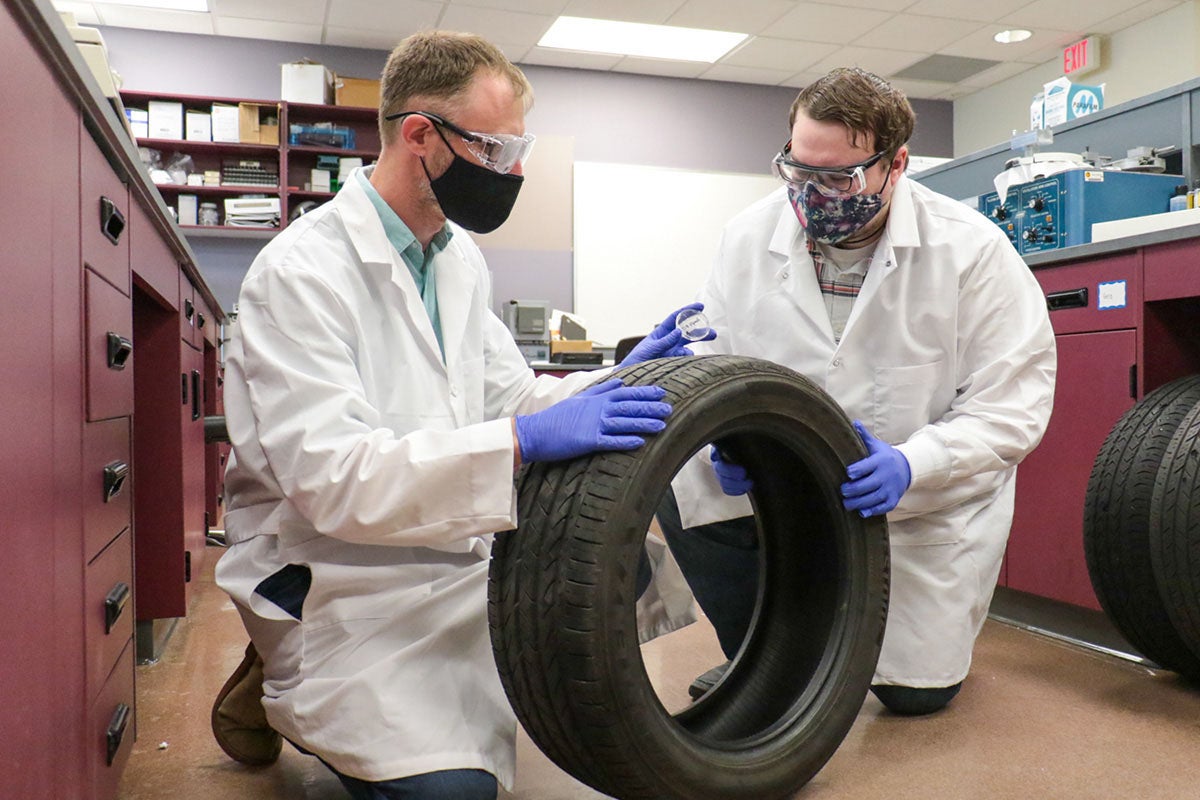Skid marks left by cars are often analyzed for their impression patterns, but they often don’t provide enough information to identify a specific vehicle. UCF Chemistry Associate Professor Matthieu Baudelet and his forensics team at the National Center for Forensic Science, which was established at UCF in 1997, may have just unlocked a new way to collect evidence from those skid marks.
The team recently published a study in the journal Applied Spectroscopy that details how they are classifying the chemical profile of tires to link vehicles back to potential crime scenes.
“Tire evidence is often overlooked in forensics,” says Baudelet. “In cases of hit and runs or accidents involving multiple cars the chemical signature of the tires have the potential to be integral information to the investigation.”
The team used laser-induced breakdown spectroscopy (LIBS) on each sample. The technique focuses a laser onto the tire sample, which creates a microscopic plasma that emits light according to the chemical elements present. The spectroscopy comes in because it analyzes this light and matches it to the corresponding chemicals. It’s the same technique that instruments aboard the Mars rovers (Curiosity and Perseverance) use to determine what kinds of elements are found within the rocks of Mars.
“The process is as complicated as it is fun,” says Baudelet. “The whole idea is that tire evidence holds a lot of data. They have patterns, but these pattern impressions do not give all the answers. It became a question of ‘Can we use their chemical composition to obtain information from the tires?’”
Baudelet and his graduate student, John Lucchi, started testing their idea by recreating skid marks in the laboratory using road materials like concrete and asphalt. By pressing a tire into the surface at the same velocity as a moving vehicle, a braking impression is made on the laboratory controlled “road” from the tire. This in turn gives the team a chance to analyze the chemical composition of the tire and the road material and make chemical comparisons.
Every tire is expected to have its own chemical signature and, as such, a unique, corresponding skid mark. One current challenge is identifying how elements on the road like oil, rainwater, and other cars interfere and change that signature. Baudelet says the National Center for Forensic Science has been working on overcoming these interference challenges with other evidence for years.
Now that the process shows promise, the team will focus on establishing statistical reliability. Standards for police evidence are justifiably high, so next steps involve reproducible, dependable protocols, Baudelet says. Ultimately, he would like to know his team’s work provided justice and closure to cases of hit-and-run and vehicle violence.
“We’re still working but so far we’ve made a lot of progress,” Baudelet says. “I feel that this can be a great supplementation to the methods currently being used in forensics and law enforcement.




